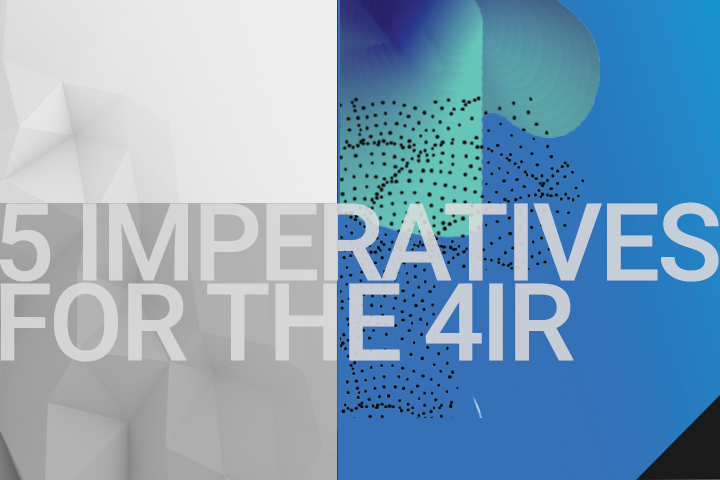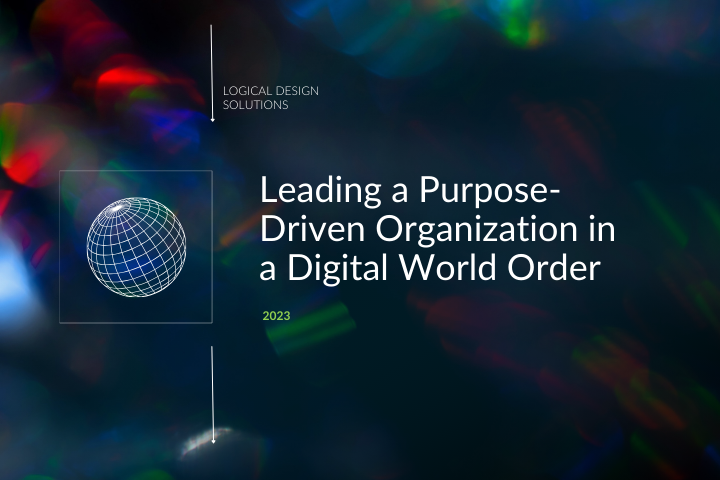4 min read
5 Imperatives for the Second Wave of the 4th Industrial Revolution
Recommended Pre-Read: This piece builds on concepts discussed in our POV "5 Lessons Learned in the First Wave of the 4th Industrial Revolution." ...
4 min read
Logical Design Solutions
:
8/15/19 3:30 PM
The magnitude of this escalating disruption is difficult to grasp. Many organizations structured around vertically contained markets continue to advocate random digital projects without strategic direction or centralized control, even while competitors are executing plans for organizational transformation and redesigning core work that optimizes artificial intelligence and machine learning.
With roughly 10-12 years of digital transformation under our belts, we can’t dismiss this change as a temporary state, and there’s no returning to a prior condition of “normal business” as we’ve known it. To do so would be to ignore major trends that are shaping work for years to come, including the rise of platform-driven business ecosystems, the gig economy, customer-oriented operations, and privacy domains that are all facilitated by digitally-enabled automation.
The first wave of the 4IR taught many companies the value of anticipating disruptive change and using this disruption to create new market models and new ways of working. Even as we embrace the second wave of the 4IR, we feel it is important to reflect on some of the major lessons learned from the last decade.
Lesson 1:
|
During the first wave, we saw a plethora of siloed or isolated digital initiatives that lacked strategic direction or expected outcome and were bereft of effective coordination. With no means to shut down the poor performers, and no clear way to move successful ones forward to an enterprise scale, we went digital “on the edges” in a reactive, technology-driven response.
Yet even while digitally-focused companies can scale up their agile programs through unified and straightforward software and product development lifecycles, it is crucial that digital initiatives are harmonized and prioritized to the business-digital strategy and new operating model. Only then can we assess iterative progress, understand employee impacts and build an adaptive, participatory culture into the entire company. Only then can we design customer interactions that are human at their core even if digital at the point of interaction.
Lesson 2:
|
The 4IR is turning traditional organizational structures inside out, as vertical siloes simply cannot function efficiently in a digital-first business environment. These heavily instantiated structures – largely still in place today – result in early digital projects implemented in isolated pockets, with a localized impact that mirrors our organizational siloes.
During the second wave, these siloes will need to dissolve, as the lines between functions dissipate and an ever-smaller group of core employees cooperate with the company’s expanding gig economy workforce, who in turn will constantly turnover even while artificial intelligence and machine learning assets become trusted ecosystem workers. We see these ecosystems not only in the shifting architecture of our industries into new marketplace ecologies, but also in the business operations that run uninterrupted inside and outside the organization.
Lesson 3:
|
The first wave of the 4IR has catapulted culture and engagement into the realm of everyday business. In an era of uncertainty and disruption, it has become critical that new work practices are instantiated as culture. Pervasive digital capabilities mean that every cultural nuance within a company is fair game for public consumption and discussion. Pursuing a diversity of ideas, encouraging participation through shared learnings, embedding customer-centric ideals and informal ways of working must in turn enable reliable, impromptu action and insights when these are needed most. This approach will be even more crucial during the second wave, when automation will drive significant change.
Employees will remain the crucial ‘glue’ in the future of work as they assume ever more complex tasks, leaving repetitive, everyday chores to machines. In an environment that opens new avenues of intellectual challenge and productivity for core workers, along with a more flexible and agile way of conducting everyday business, it is critical that those individuals are fully engaged and recognized for their elevated level of contribution to the enterprise.
Lesson 4:
|
Perhaps the most underdeveloped idea from the first wave of digital transformation was the focus on early or ‘low-hanging fruit’ automation, but without a similar level of focus on optimizing human-machine work. This evolving human-machine relationship – where people and automation coexist -- is a crucial aspect of any digital transformation strategy. For many organizations, the amount of fully automated work is small compared to the amount of work expected to be performed in a hybrid partnership. As humans increasingly take their "hands off the wheel" at work and rely on machines to do as much as routinely possible, this area will be a critical focus of organization and work design. We are entering the second wave quite unprepared for this challenge, with issues ranging from ethical design, to social and economic policies, to ready leadership and an equipped workforce.
Lesson 5:
|
One of the starkest outcomes of the first wave of the Fourth Industrial Revolution is the need for new, horizontal organizational capabilities. Installing digital initiatives in isolated pockets of the company and expecting workers to adapt and learn on timescales that involve harnessing the combined power of human capital and virtual ‘robots’ is a tall order without a methodology for managing this type of sea change. In concert with digital transformation, leaders must literally reinvent the organizational structure in order to make the most of both their human capital and machine learning capacities. Those who do not have the optimal organizational and technological support in place during the second wave will quickly be usurped by more agile competitors.
On the human side, it is critical to acquire talent who can adapt quickly, are comfortable with change, are not afraid to take risks, are highly collaborative, and are critical, systems-based thinkers. Leading enterprises during this second wave will not only adapt and shift to market demands, but also facilitate learning and development on multiple timescales, whereby human workers will assume ever more complex tasks, while machines solve repetitive problems within ever shorter time frames.
As we move into this phase of the 4IR, we will see the emergence of global, interoperable mega-ecosystems with organizations and organisms (new and reconstructed) that are digital at their core. While machines will increasingly do most of the routine work as we know it today, new models of productivity and participation will enable people to add value on a broader scale. Perhaps at the end of this second wave – in the 2030s – we will begin to see the opportunities and challenges associated with the redefinition of human work itself.

4 min read
Recommended Pre-Read: This piece builds on concepts discussed in our POV "5 Lessons Learned in the First Wave of the 4th Industrial Revolution." ...

1 min read
The Mega Challenges Facing Businesses Today As we enter the second wave of the Fourth Industrial Revolution (4IR), a mixture of economics, politics,...

Our Leading a Purpose-Driven Organization in a Digital World Order white paper explores the pressing challenges confronting business leaders during...